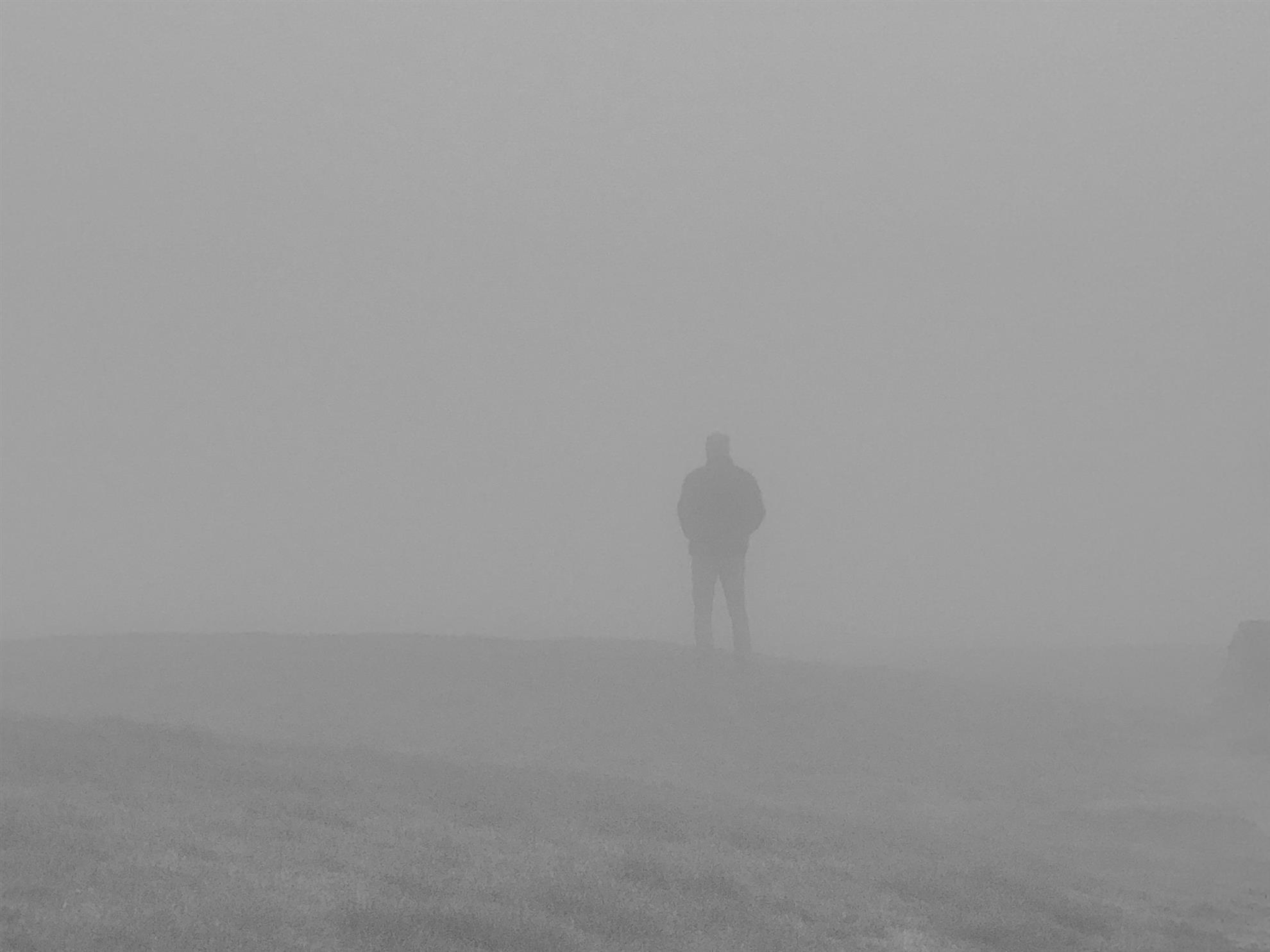
We are grateful for this story from the secretive Mountain Ghost.
The Editor managed to snap an image outside the Ghost's misty mountain lair.
The Mountain Ghost on his walk from Mt Victoria to Glenbrook passes through 14 townships (actually his walk was from his front door to his car) Anyway he has often wondered where the names came from although he did have an inkling with Blaxland, Wentworth and Lawson. This is the result of his research:
Mount Victoria – Originally known as One Tree Hill in 1834 but changed to Mt Victoria in 1876 when the Post Office opened. Population 1,000.
Blackheath – was named Black Heath by Governor Macquarie in 1815. Highest railway station in the Mountains but Mt. Victoria is actually a higher town. Population 4,400.
Medlow Bath – Originally called Brown’s Siding after the railway opened in 1880 to service Brown’s Sawmill. Renamed Medlow in 1883 and then Medlow Bath in 1904. Population 600.
Katoomba – the local indigenous tribe called the area “Kedumba” meaning shiny falling water. Kedumba became Katoomba. Population is 8,000.
Leura – This is the mystery name in the Mountains. No one knows where the name came from. First appeared on a map in 1881. There was a Leura House about this time. Population 4,600.
Wentworth Falls – Originally known as Weatherboard after the Weatherboard Inn built in 1814. In 1879 it was renamed Wentworth Falls. Population 6,000.
Bullaburra – Does not have a commercial area, the local service station shut down in 2008. Bullaburra is an aboriginal word meaning clear day. Population 1,230.
Lawson – On original maps this was known as 24 Mile Hollow and for a short time it was known as Christmas Swamp. When the Blue Mountains Inn was opened in 1848 the village became known as Blue Mountains. This became confusing so it was renamed Lawson. Population 2,600.
Hazelbrook – Took its name from Hazelbrook House built in 1870 and stood opposite the current railway station. The house no longer exists. Population 5,000.
Woodford – Originally known as 20 Mile Hollow. The Woodford Inn built in the 1830’s eventually became the Woodford Academy and the name Woodford was adopted in 1871. Population 1,900.
Linden – Named in 1874 after Linden Lodge. The original name was 17 Mile Hollow. It is the smallest town in the Blue Mountains. Population 500.
Faulconbridge – Was named after Sir Henry Parkes house. Originally his property covered 600 acres and the original station was just to service his property. Faulconbridge was the home of Norman Lindsey. Population 4,000.
Springwood – Named by Governor Macquarie in 1815 because the springs in the area and “wood” from the local Blue Gums. Population 8,500.
Valley Heights – named after the Railway Museum there. Population 1,300.
Warrimoo – The railway was opened in 1898 and called Karabah. In 1918 a new station was built and called Warrimoo by the developer, Arthur Rickard. It is believed the name is an Aboriginal word for eagle’s nest or place of the screaming white bird. Warrimoo’s most famous resident was Dorothy Wall, the author of Blinky Bill the lovable koala. Population 2,500.
Blaxland – Originally known as Wascoe. Renamed Blaxland in 1879. Wascoe Siding Miniature Railway was established in 1964 and is still going. Population 7,500
Glenbrook – Takes its name from Glenbrook Creek which must be crossed to access the Blue Mountains National Park. The township was established in 1870 to service the new railway.
Well, the Ghost hopes you are now equipped for your worthy Trivia Night to support the homeless folk in September. During his research the Ghost did learn a thing or two himself. The name 17 mile hollow, 20 mile hollow and 24 mile hollow is the distance from Penrith when the original Great Western Highway was being built. Another useful piece of information is that Don Bradman hit a century off just 3 overs for Blackheath in 1931 at Blackheath Oval in a social match against Lithgow. He went on to make 256. Also, the Ghost learnt that Springwood has more residents than Katoomba.